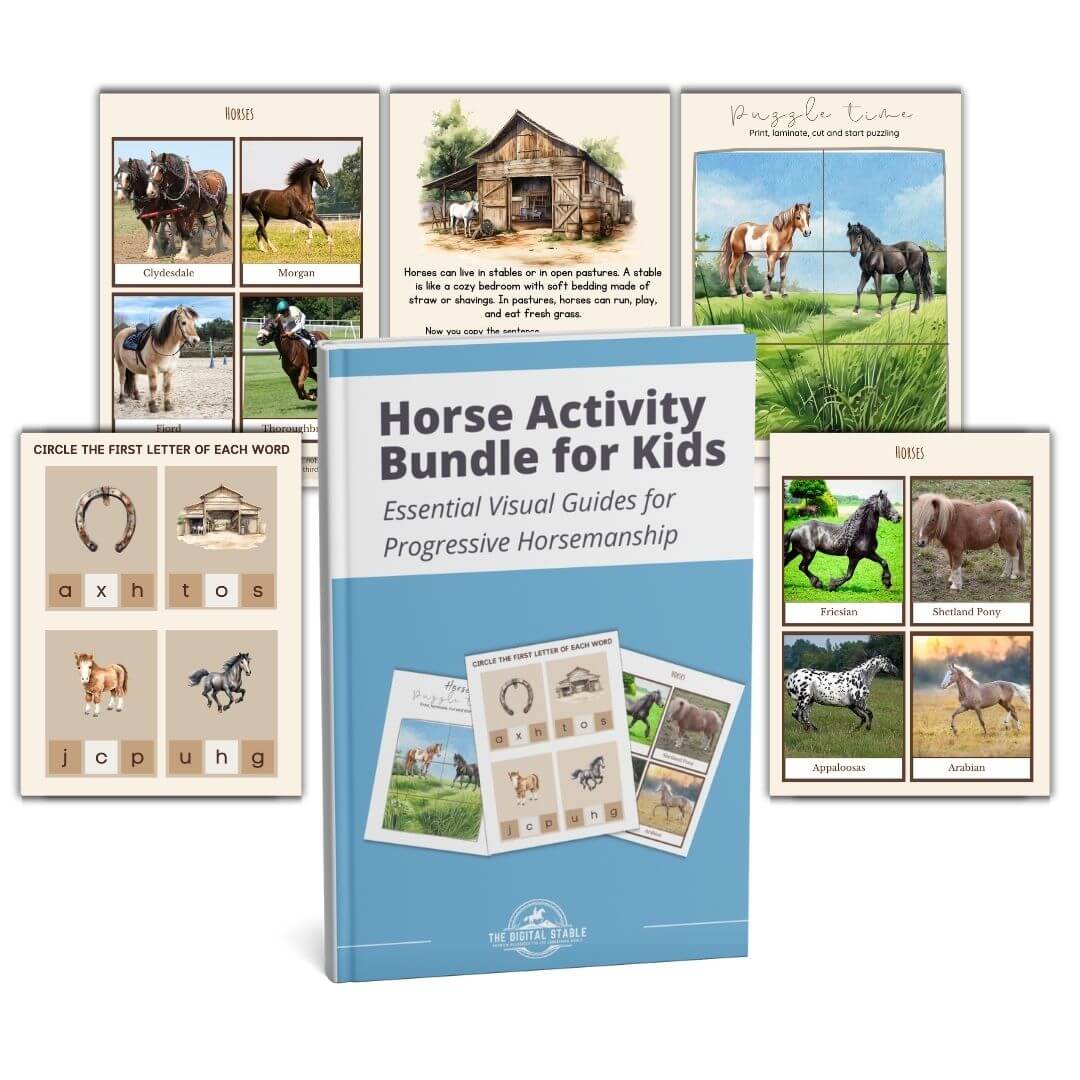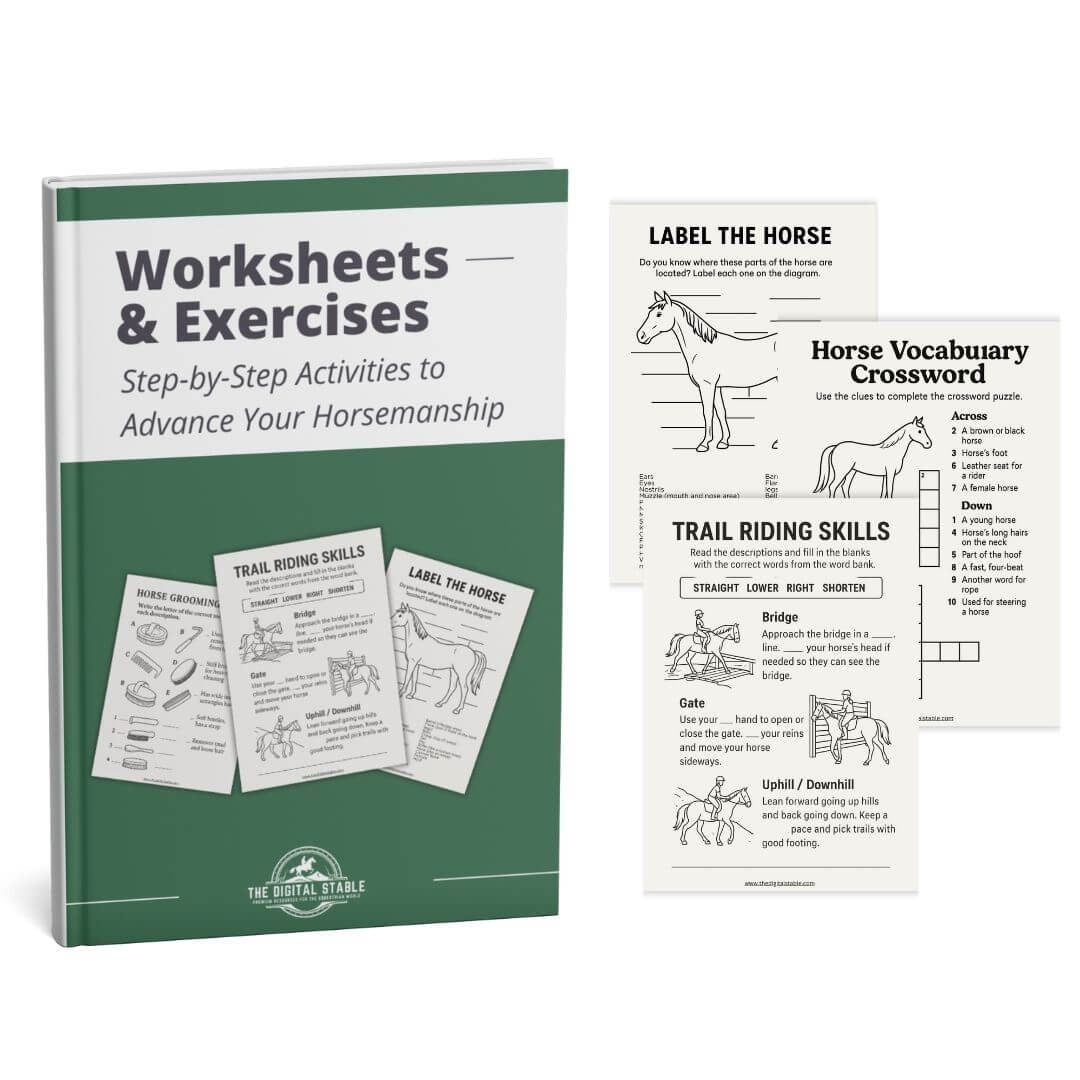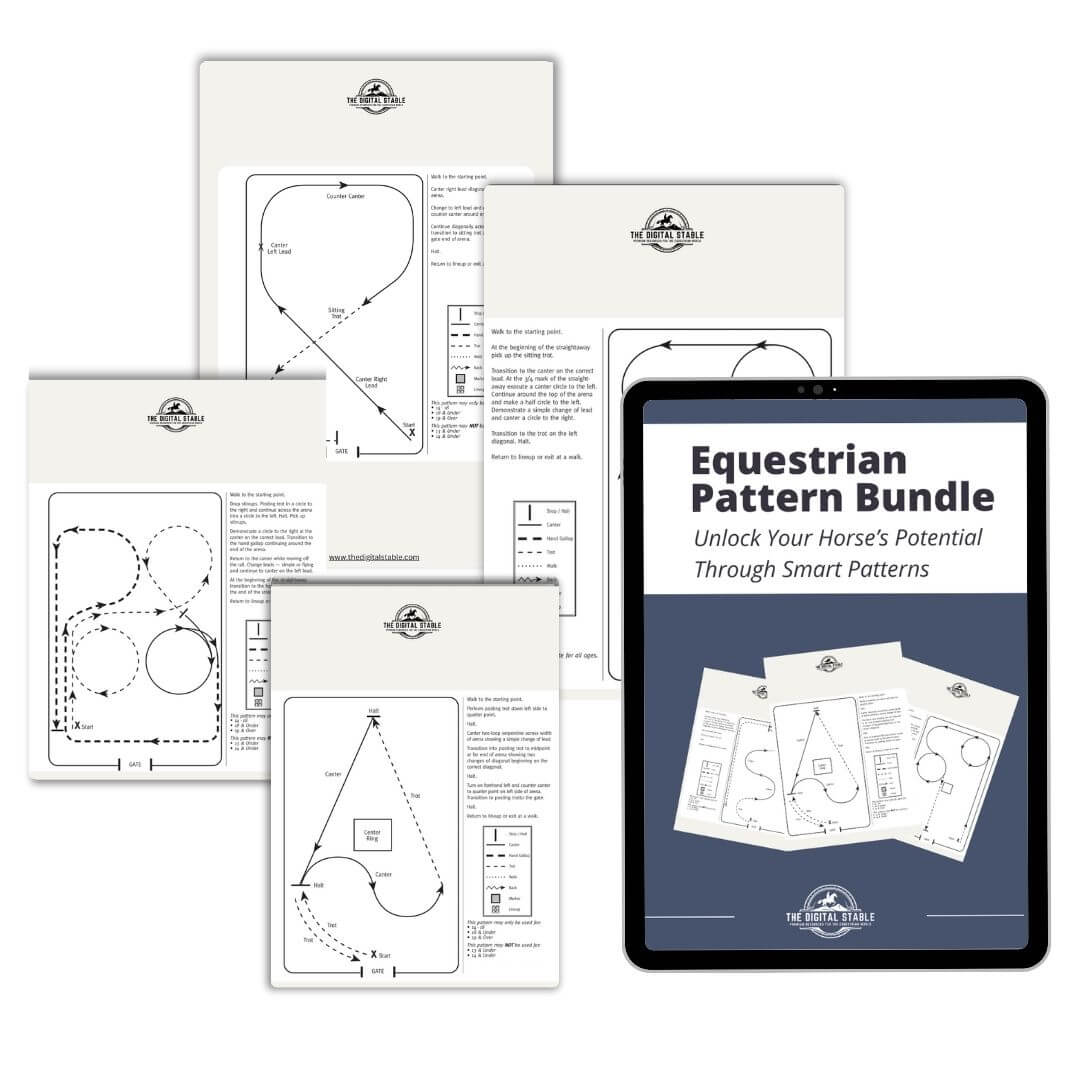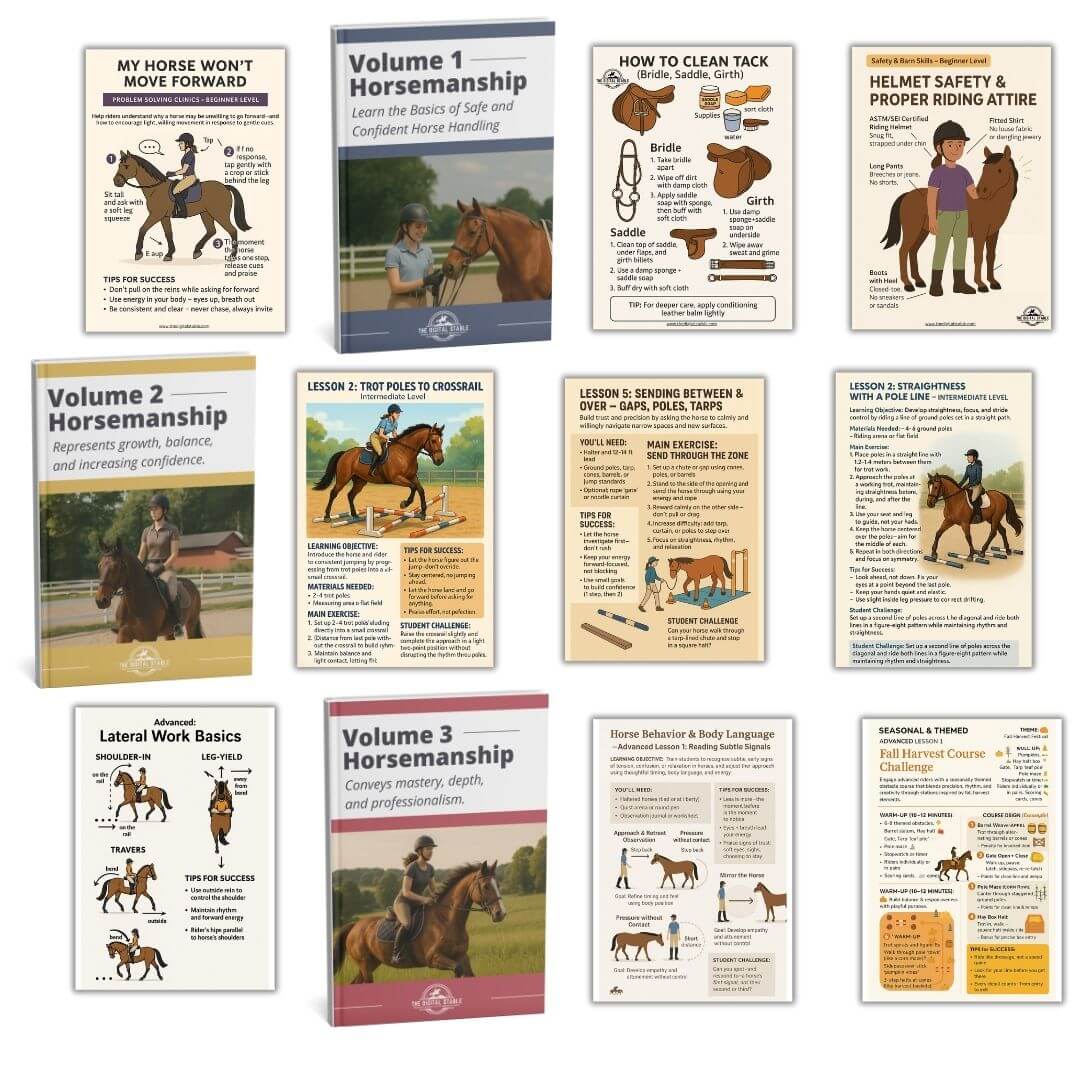Polework isn’t just for jumpers—it’s one of the best ways to boost your horse’s coordination, rhythm, and engagement.
You don’t need a fancy arena or dozens of poles. With just a few basic exercises, you can help your horse think, stretch, and move more mindfully. These three beginner-friendly exercises can be done at the walk or trot and require minimal setup.
Exercise #1: Walk Over Single Ground Poles
Goal: Develop rhythm and awareness of foot placement.
Setup: 1–3 poles, spaced 3–4 feet apart.
How-To:
-
Walk over the poles in a straight line.
-
Keep your hands soft and eyes forward.
-
Let the horse look and adjust stride naturally.
Tips for Success:
-
Don’t over-cue. Let the horse figure it out.
-
Reward a steady, balanced walk.
Challenge: Can your horse walk over all three poles without tripping or rushing?
Exercise #2: The Pole Box – Stop, Stand & Go
Goal: Teach control and calm transitions.
Setup: 4 poles set in a square (the “box”).
How-To:
-
Walk into the box and halt. Count to 3.
-
Walk out calmly in a straight line.
-
Repeat from different directions.
Tips for Success:
-
Breathe out when asking for halt.
-
Keep rein contact light—let the horse listen, not brace.
Challenge: Can your horse stop, stand for 5 seconds, and walk out on your lightest cue?
Exercise #3: Serpentine Through Cones & Poles
Goal: Improve bend, steering, and balance.
Setup: 4–6 cones or poles set in a curving serpentine pattern.
How-To:
-
Walk through the serpentine, weaving evenly around each cone or pole.
-
Add trot when confident.
-
Use your seat and legs more than your hands.
Tips for Success:
-
Look ahead, not down.
-
Don’t lean through the turns—stay centered.
Challenge: Ride the whole serpentine without touching a cone or breaking rhythm.
Bonus Benefit:
Polework also helps you as the rider develop timing, posture, and feel. It’s a low-pressure way to become more aware of your own cues.
Want Printable Exercises?
Download our Polework Worksheets and Step-by-Step Lessons from The Digital Stable to guide your practice with diagrams, student challenges, and progression ideas.












